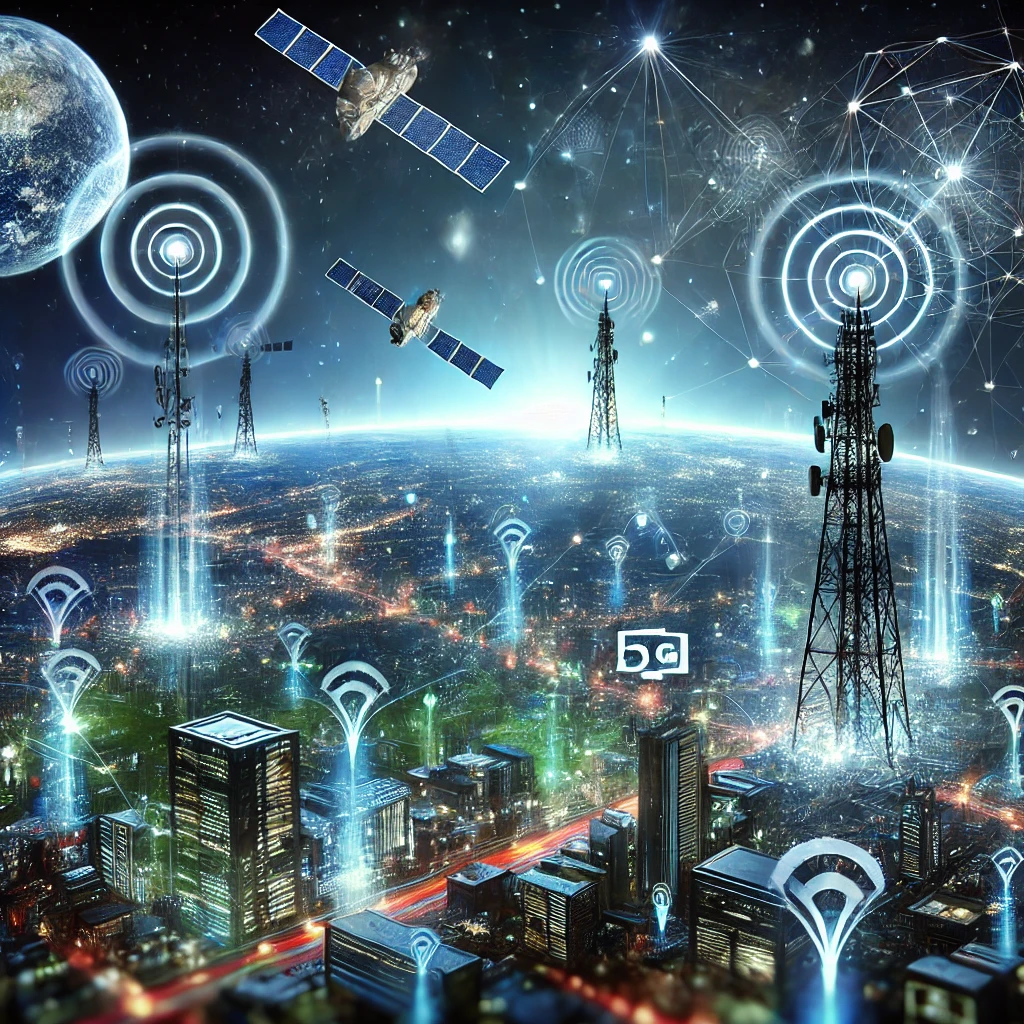Introduction to Wireless Communication Technology
Contents
Wireless communication technology has become an integral part of our daily lives, enabling seamless connectivity across various devices and platforms. From mobile phones to Wi-Fi networks, the advancements in wireless technology have revolutionized how we communicate, access information, and interact with the world. As we move into an increasingly connected future, understanding the current state and potential developments of wireless communication technology is essential for both consumers and businesses.
The Evolution of Wireless Communication
Early Beginnings
Wireless communication technology has a rich history dating back to the late 19th century. The invention of the radio by Guglielmo Marconi in 1895 marked the beginning of wireless communication, allowing signals to be transmitted over long distances without the need for physical connections. This breakthrough laid the foundation for the development of various wireless communication systems, including satellite communication, television broadcasting, and mobile networks.
The Rise of Mobile Networks
The introduction of cellular networks in the 1980s marked a significant milestone in the evolution of wireless communication. The first generation (1G) of mobile networks enabled voice communication through analog signals. Over the decades, mobile networks have evolved rapidly, with the introduction of 2G, 3G, and 4G technologies, each bringing enhanced data speeds, improved call quality, and the ability to transmit multimedia content. Today, 5G networks are being rolled out globally, promising ultra-fast data speeds, low latency, and the capacity to support a massive number of connected devices.
Key Technologies Driving Wireless Communication
5G Technology
5G, or the fifth generation of mobile networks, is the latest advancement in wireless communication technology. It offers significantly faster data speeds compared to its predecessors, with potential download speeds reaching up to 10 Gbps. 5G technology also boasts lower latency, reducing the time it takes for devices to communicate with each other. This is particularly important for applications requiring real-time responses, such as autonomous vehicles, remote surgery, and augmented reality experiences.
HWi-Fi 6
Wi-Fi technology has also seen significant improvements with the introduction of Wi-Fi 6. This new standard offers faster speeds, better performance in congested areas, and improved energy efficiency for connected devices. Wi-Fi 6 is designed to handle the increasing number of devices connected to a single network, making it ideal for smart homes, offices, and public spaces. With the proliferation of IoT (Internet of Things) devices, Wi-Fi 6 plays a crucial role in ensuring seamless and reliable wireless connectivity.
Satellite Communication
Satellite communication has long been a cornerstone of global connectivity, providing coverage in remote and underserved areas where terrestrial networks are not feasible. Recent advancements in satellite technology, such as low Earth orbit (LEO) satellites, have further enhanced the capabilities of satellite communication. Companies like SpaceX and Amazon are deploying constellations of LEO satellites to deliver high-speed internet access to every corner of the globe, bridging the digital divide and enabling new opportunities for communication and commerce.
Challenges in Wireless Communication
Spectrum Allocation
One of the primary challenges in wireless communication technology is the allocation of the radio frequency spectrum. The spectrum is a finite resource, and as the demand for wireless services increases, so does the competition for available frequencies. Governments and regulatory bodies must carefully manage spectrum allocation to ensure that different services can coexist without interference. The introduction of 5G has further intensified the need for efficient spectrum management, as higher frequency bands are required to achieve the promised speeds and capacity.
Security Concerns
As wireless communication technology becomes more pervasive, security concerns are also on the rise. The increasing number of connected devices and the reliance on wireless networks for critical infrastructure make them attractive targets for cyberattacks. Ensuring the security of wireless communication networks requires robust encryption, authentication protocols, and continuous monitoring to detect and mitigate potential threats. The development of quantum communication technologies is also being explored as a future solution to enhance the security of wireless networks.
The Future of Wireless Communication
6G and Beyond
While 5G networks are still in the early stages of deployment, research and development for the next generation of wireless communication, known as 6G, are already underway. 6G is expected to bring even faster data speeds, lower latency, and more advanced capabilities such as integrated AI (Artificial Intelligence) and extended reality (XR) experiences. The potential applications of 6G are vast, ranging from holographic communication to smart cities with interconnected infrastructure.
The Role of AI and Machine Learning
Artificial Intelligence (AI) and Machine Learning (ML) are poised to play a significant role in the future of wireless communication technology. These technologies can optimize network performance, predict and prevent network congestion, and enhance the user experience by providing personalized services. AI-driven networks will be able to adapt to changing conditions in real time, ensuring seamless connectivity and efficient use of resources.
The Impact of IoT
The Internet of Things (IoT) is another area where wireless communication technology will continue to evolve. As more devices become connected, the demand for reliable and low-latency wireless communication will grow. The integration of IoT with 5G and future 6G networks will enable new applications in areas such as smart healthcare, industrial automation, and environmental monitoring. Wireless communication technology will be the backbone of these innovations, enabling a more connected and intelligent world.
Conclusion
Wireless communication technology has come a long way since the invention of the radio, and its evolution shows no signs of slowing down. With the ongoing deployment of 5G networks, advancements in satellite communication, and the future potential of 6G, wireless communication will continue to shape the way we live, work, and interact with the world. As we look to the future, it is crucial to address the challenges of spectrum allocation, security, and the integration of emerging technologies to ensure that wireless communication remains a driving force for innovation and progress.
By staying informed and adapting to these changes, businesses and consumers alike can harness the full potential of wireless communication technology in the years to come.


